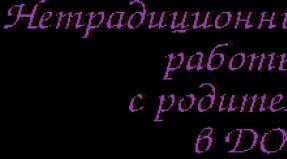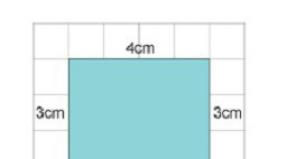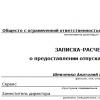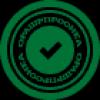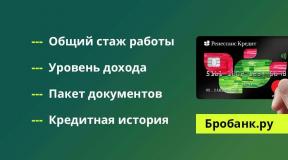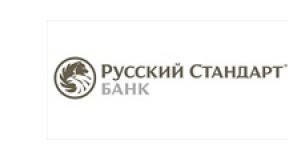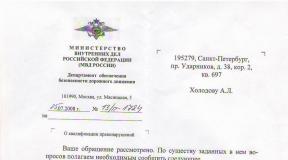Disinfection definition of types and methods of disinfection. Types of disinfection, measures for the destruction of infections. boiling water treatment, boiling
Transfer mechanism- this is an evolutionary process of movement of a pathogen within one population from the organism of one host to a susceptible organism of another host, which ensures the preservation of the pathogen as a biological species in nature.
An infected human or animal organism in which pathogenic pathogens can live, multiply, accumulate and be released into the external environment is called source of infection.
Epidemic focus- this is the location of the source of infection with the people around him and in the territory within which the transmission of the causative agent of an infectious disease is possible. From the point of view of the population approach, an epidemic focus is a population of a pathogen with people supporting its existence.
Anti-epidemic measures and means
Before proceeding to the consideration of individual measures in the prevention of infectious diseases, it is necessary to understand what is meant by the terms that are widely used in the literature on epidemiology, and what is the theoretical basis for the organization and conduct of certain activities.
Each branch of medicine has a specific system of activities. An important section of clinical medicine is the system of therapeutic measures. In preventive medicine, we can talk about a section that systematizes knowledge about preventive measures. In hygiene, the concepts of primary and secondary prevention are formulated. Measures aimed at the prevention of infectious diseases are called anti-epidemic measures.
Anti-epidemic measures- this is a set of actions that are justified at this stage in the development of science, ensuring the prevention of the occurrence of infectious diseases among certain groups of the population, reducing the incidence of the total population and eliminating individual infections.
The above definition of the concept of “anti-epidemic measures” includes all actions that are in one way or another related to the prevention of infectious diseases. This does not take into account the time of the activities in relation to the time of occurrence of infectious diseases (before the occurrence, during the spread, after the spread). It is customary to differentiate anti-epidemic measures by the time they are carried out into two groups: 1) preventive actions- are carried out before the occurrence of infectious diseases and are aimed at preventing the occurrence of these diseases; 2) activities carried out in the epidemic focus(actually anti-epidemic) - are carried out in connection with the emergence of an epidemic focus in order to prevent the spread of infection in this focus and beyond.
Development of the theory of self-regulation of the epidemic process V.D. Belyakov made it possible to explain the internal content of the identified two groups of events. Preventive measures are those measures that prevent the formation of epidemic variants of the pathogen. Measures taken in an epidemic focus (anti-epidemic) include measures that prevent the spread of epidemic variants of the pathogen.
There are many activities that can be classified as preventive or activities carried out in an epidemic focus. From a practical standpoint, the most rational is the grouping of each of these groups according to the direction of their action. Distinguish activities aimed at: 1) the source of infection; 2) transmission mechanism; 3) the susceptibility of the organism. In addition, in this grouping, a group of common events is distinguished.
Additional approaches to grouping involve the allocation of the following groups of anti-epidemic measures:
dispositional measures - prevent the disease in case of infection (immunocorrection, immunoprophylaxis, emergency prophylaxis);
exposition measures - prevent infection (isolation, treatment, regime-restrictive, sanitary-veterinary, sanitary-hygienic measures, deratization, disinfection, disinsection);
measures requiring anti-epidemic agents or preparations (treatment, deratization, disinfection, disinsection, immunocorrection, immunoprophylaxis, emergency prophylaxis);
measures that do not require anti-epidemic agents or drugs (isolation, restrictive regime, sanitary and veterinary, sanitary and hygienic measures).
Criteria for choosing anti-epidemic measures.
The first criterion is the features of the epidemiology of individual groups and nosological forms of infectious diseases, which predetermines the possible causes and conditions for the development of the epidemic process.
The second criterion for choosing the main events is the specific causes and conditions for the development of the epidemic process.
The third criterion that is used when choosing the main areas of interventions is the degree of their effectiveness and accessibility for practical application.
Disinfection- this is a set of measures aimed at the destruction or reduction of the population of vegetative or dormant forms of pathogenic and opportunistic pathogens on abiotic environmental objects in order to prevent the spread of infectious diseases.
Distinguish preventive and focal types of disinfection.
Preventive disinfection carried out in places of probable accumulation of pathogens of infectious diseases out of connection with the epidemic focus.
Spot disinfection is carried out in an epidemic focus in connection with a case of an infectious disease or a bacteriocarrier. Spot disinfection can be current and final.
Current disinfection carried out in the focus in the presence of a source of infection and is aimed at the destruction of pathogens as they are released by the patient or carrier.
Final disinfection is carried out after hospitalization, recovery or death of the patient, i.e. after removal of the source of infection in order to completely free the focus from pathogens.
Mechanical disinfection method- this is a decrease in the population of pathogens under the influence of mechanical factors (washing, cleaning, filtration, ventilation, etc.).
Physical disinfection method- this is the destruction or reduction in the population of pathogens under the influence of physical factors (high temperature, ultraviolet radiation, ultrasound, etc.).
Chemical disinfection method- this is the destruction or reduction in the population of pathogens under the influence of chemicals.
Biological disinfection method- this is the destruction of pathogens of infectious diseases in the external environment by means of a biological nature (with the help of antagonist microbes); has a specific purpose.
Disinfection quality- this is the degree of compliance of disinfection with the standard or the requirements of regulatory documents.
Disinfection efficiency- this is the degree of achievement of the final result due to the disinfection.
Preventive disinfection.
Indications for carrying out are a high probability of accumulation of microorganisms and the threat of the spread of infection. It is carried out without regard to the occurrence of the disease and the formation of an epidemic focus. The main objects of preventive disinfection are:
Treatment and prevention organizations, children's consultations and other similar institutions (disinfection is carried out during breaks or after the end of appointments);
Children's preschool and school organizations;
Public places or mass gatherings of people (railway stations, steamships, wagons, cinemas, hostels, etc.);
Organizations of the food industry, trade and public catering, markets;
Enterprises for the processing and storage of raw materials of animal origin;
Water intake and waterworks;
Hairdressers, baths, swimming pools and other sports and health organizations.
Depending on the nature of the object, preventive disinfection is carried out by economic organizations themselves, if constant and uninterrupted disinfection is required. For example, constant pasteurization of milk is required at dairies; constant and continuous disinfection of water in waterworks, especially from open water intakes, as well as in swimming pools. Preventive disinfection in these cases is carried out by the personnel of these organizations. Disinfection departments of territorial TsGEiOZ perform methodological and control functions. When preventive disinfection is of a one-time or periodic nature, then it is carried out on a contractual basis by the forces and means of the Centers for Preventive Disinfection or disinfection departments of the Central State Health and Healthcare Center. This is, for example, periodic disinfection of markets, premises and equipment of catering establishments after major repairs or re-profiling, etc.
Current disinfection.
The most common indications for its implementation are:
Stay of the patient in the center before hospitalization;
Treatment of an infectious patient at home until recovery;
The presence of a bacteriocarrier in the outbreak until its complete sanitation and removal from the dispensary;
The presence of a convalescent in the focus before deregistration.
Current disinfection in apartment centers Infectious diseases are organized by a medical worker who has identified an infectious patient, more often a local doctor - he explains and trains the patient or those caring for the patient in the current disinfection methodology. It is carried out in apartment centers by the patients themselves, by bacteria carriers or by persons caring for the sick.
Current disinfection in apartment outbreaks includes two groups of measures: sanitary and hygienic and disinfection of environmental objects, as well as the discharge of the patient. Sanitary and hygienic measures include:
isolation of the patient in a separate room or a fenced off part of it; exclusion of contact with children; limiting the number of objects with which the patient can come into contact;
the allocation of a separate bed, care items, dishes for food and drink - they are stored and washed separately from the things of other family members;
compliance with the rules of personal hygiene;
maintaining cleanliness in rooms and common areas (2-3 times a day airing and wet cleaning using cleaning equipment separately for the sick room and other rooms); in the foci of aerosol infections - wearing cotton-gauze bandages; in the summer, a systematic fight against flies.
To disinfect environmental objects in residential areas, physical and mechanical methods of disinfection are usually used using detergents and disinfectants for household chemicals (soda, soap, boiling and hot water, as well as washing and ironing). Chemical disinfectants are used only to disinfect secretions.
Current disinfection in infectious and somatic hospitals is carried out in order to prevent nosocomial infections and to prevent the spread of infection outside the hospital. The management and control over the current disinfection in health care facilities is assigned to one of the doctors by order of the head doctor of the organization. Direct implementation of measures for current disinfection in hospitals is carried out by junior medical personnel. Current disinfection is carried out during the entire period of stay of patients in a medical institution, from their admission to discharge. An important role in the prevention of nosocomial infections is played by measures aimed at reducing the level of microbial contamination of surfaces and air in the premises of healthcare facilities. These include cleaning rooms and the use of ultraviolet rays to reduce microbial contamination and improve hygiene conditions.
Depending on the functional purpose of the premises, their cleaning is carried out in different ways. Distinguish between current and general cleaning in LPO. Current cleaning is carried out daily, general cleaning (in treatment rooms, dressing rooms, operating rooms, distribution rooms) - weekly.
Current cleaning is carried out in a wet way using detergents and disinfectants. At the same time, floors, walls, doors and door handles, windows, window sills, radiators, sinks for washing hands and toilets are wiped. Cleaning equipment and rags must be clean and stored in a separate closet or room. For each functional room, its own marked inventory must be allocated, which is prohibited from being used for other rooms. After cleaning, inventory and rags should be disinfected in a disinfectant solution. When carrying out current disinfection in healthcare facilities in the presence of patients, it is prohibited to irrigate surfaces with disinfectant solutions, and when wiping, use drugs that have an irritating effect or cause allergies.
General cleaning is carried out once a week according to the schedule approved by the head of the department. In case of obtaining unsatisfactory results of assessing the degree of microbial contamination of the external environment of the functional premises of the healthcare facility, it is carried out outside the schedule. For general cleaning, medical personnel must have special clothing, rubber gloves, goggles (if necessary), and sterile rags. Disinfection is carried out by irrigating or wiping the ceiling, walls, windows, furniture, doors, floors. At the end of cleaning, bactericidal irradiation is carried out, after which the premises are additionally ventilated for 30 minutes.
Particular attention should be paid to the decontamination of patient care items. To this end, they are washed with hot water, soaked in water with the addition of disinfectants, or wiped with a rag soaked in the same water. Bedding, underwear, gowns after the discharge of patients must be disinfected in a chamber way.
In the prevention of nosocomial infections, the disinfection of the hands of medical personnel is of great importance. There are three levels of hand decontamination: routine hand washing, hygienic disinfection and debridement. Routine hand washing is done to remove visible contamination and reduce the number of bacteria on the skin. With thorough hand washing with detergents, up to 99% of the microflora can be removed from the skin surface. Hands must be washed before eating, preparing and distributing food, before and after examining patients, visiting the toilet. Liquid soap is considered to be preferable for routine handwashing, and hands should be dried with disposable paper towels or personal towels. Before performing invasive procedures, before and after manipulations with wounds, after contact with the secretions of the patient, hands should be hygienically disinfected using antiseptic soap or wiped with swabs moistened with skin antiseptics, followed by washing twice with toilet soap. Surgical hand disinfection is performed by surgeons and nurses before surgery to kill all microorganisms.
Current disinfection in quarantine groups and classes in children's preschool and school organizations, in closed children's and adolescent organizations, it is carried out in the same way as in health care facilities, by the medical and technical personnel on their own.
General management of the current disinfection, quality control of its implementation is carried out by the Centers for Disinfection and Sterilization and the disinfection departments of the CGE.
Final disinfection is carried out after hospitalization of an infectious patient or a bacteriocarrier, recovery or death, i.e. after removal of the source of infection. Its purpose is the complete liberation of the focus from pathogens. It is necessarily carried out in the foci of infectious diseases indicated in Table. one.
Table 1
List of infectious diseases
in which the final disinfection is carried out
|
Name diseases |
Indications for final disinfection |
Who is applying |
Deadlines from the moment of receipt of the application |
Carrying out chamber disinfection of things |
|
Typhoid (typhoid, typhus, relapsing, Brill's disease), paratyphoid, anthrax, quarantine diseases (plague, cholera, yellow fever), contagious VHF, fever KU(pulmonary form), ornithosis, leprosy. |
Registration of each case |
Directly for hospitalization of a patient |
Necessarily |
|
|
Fungal diseases (microsporia, trichophytosis, favus) |
Registration of each case |
Medical worker of the dermatological and venereal dispensary |
Within a day from the date specified in the application |
Necessarily |
|
Polio |
Registration of each case |
Epidemiologist or Physician Assistant |
Necessarily |
|
|
Tuberculosis |
Registration of each newly detected case of an active process, regardless of localization at the place (change) of residence or death |
Medical worker of the dispensary |
Within a day from the date of receipt of form 058 / y |
Mandatory for bedding, wearable items, soft toys |
|
Registration of each case in hostels, hotels, hospitals, preschool and teenage institutions; in health organizations and nursing homes, as well as in places of residence with many children. and socially disadvantaged families |
The healthcare worker who made the diagnosis |
During the day |
Not necessarily, at the request of an epidemiologist |
|
|
Diphtheria |
Registration of each case in educational organizations and apartment |
The healthcare worker who made the diagnosis |
Within a day from the moment of receiving f.058u |
Not carried out |
|
Viral hepatitis A and E, dysentery, rotavirus infection, salmonellosis escherichiosis |
Registration of each case in kindergartens, boarding schools, orphanages, orphanages, hostels, hotels, health institutions for children and adults, nursing homes, in apartment centers of large and socially disadvantaged families |
Epidemiologist, in his absence - assistant epidemiologist |
Within a day from the date of receipt f.058u |
Not carried out. For hepatitis A, E, it can be carried out at the request of an epidemiologist |
The final disinfection is carried out by the Centers for Disinfection and Sterilization or the disinfection departments of the territorial CGE. When making an application for final disinfection in the foci of tuberculosis and fungal diseases, indicate the date and time of its implementation. In organized groups, the time for the final disinfection is agreed with the administration of these institutions. The issue of the need for final disinfection at the place of work of the sick person or his study or stay in a preschool institution, as well as its volume, is decided by the epidemiologist. It is carried out by the medical and technical staff of the institutions under the guidance of the CGE workers. For other infectious diseases, the final disinfection is carried out depending on the epidemic situation by decision of the chief state physician of the administrative territory.
In apartment foci of scabies, diphtheria, viral hepatitis BUT and E, dysentery, salmonellosis, rotavirus infection, the final disinfection can be carried out by members of the patient's family after instructions given by a medical worker of a healthcare facility or an epidemiologist.
In organized groups, the final disinfection is carried out using chemical disinfectants in the absence of people (patients) who are not related to the treatment. The personnel involved in the final disinfection must use personal protective equipment (respirator, gloves, apron).
Final disinfection is carried out in stages:
Preparation of the necessary concentrations of disinfectant solutions;
Destruction of flies in the summer;
Treatment of the front door and floor of the patient's room;
Disinfection of the patient's underwear and bed linen by boiling or (according to indications - see Table 1) collecting them in bags for subsequent chamber disinfection, which are treated with a disinfectant solution from the outside before being taken out of the hearth;
Disinfection of the patient's secretions and containers for them;
– disinfection of sanitary equipment;
Disinfection of the patient's dishes intended for food and food debris;
Disinfection of toys used by the patient;
Processing of paintings, figurines, polished things in the patient's room with which he could contact;
Disinfection of walls, windows, floors in the patient's room; while processing should begin from the remote corners of the room towards the exit;
Disinfection of cleaning equipment, rags;
Placement of overalls of disinfectors in bags intended for chamber processing;
Washing hands of personnel involved in handling.
During the final disinfection, mainly physical (boiling, burning of low-value items) and chemical (solutions of disinfectants - irrigation, wiping, soaking, immersion) methods of disinfection are used. Moreover, the choice of disinfectants used is strictly selective, taking into account their advantages and disadvantages, focusing on the properties of pathogens of infectious diseases.
Disinfect objects in the following ways:
Irrigation with disinfectant solutions of surfaces of premises, equipment, furniture, transport;
Wiping with rags moistened with disinfectant solutions, furniture, equipment, toys, patient care items, medical products;
Immersion in a disinfectant solution of dishes, linen, toys, patient care items, medical products;
Treatment with disinfectants (in the form of powders, granules or concentrated solutions) of food residues, patient secretions, corpses, garbage bins, soil, water, etc.;
Processing in chambers (steam, steam-air or steam-formalin mixture, hot air) of clothes, shoes, bedding, linen, soft toys and other objects with which the patient came into contact;
Irradiation with ultraviolet rays of air, surfaces of various objects.
The choice of disinfection method depends on the characteristics of the object to be disinfected.
Preventive disinfection- this is a set of measures aimed at the destruction or reduction in the number of populations of vegetative and dormant forms of pathogenic and opportunistic pathogens on abiotic objects of the external environment in order to prevent the spread of infectious diseases and is carried out without connection with epidemic foci in places where pathogens of infectious diseases are likely to accumulate.
The main objects of preventive disinfection are: polyclinics, children's consultations and other similar institutions (disinfection is carried out after the end of appointments or in between them); preschool institutions; public places, mass gatherings of people (railway stations, steamships, wagons, cinemas, hostels, markets, etc.); food industry enterprises, food trade and public catering establishments; waterworks; hairdressers, baths, showers, swimming pools, etc.; enterprises where raw materials of animal origin are stored and processed.
Preventive disinfection, depending on the nature of the object, is carried out either by economic organizations themselves, or by preventive disinfection centers (disinfection departments of territorial CGEs). Business organizations carry out preventive disinfection measures in cases where they need to be carried out constantly and continuously (disinfection of drinking water, pasteurization of milk and dairy products, water treatment in swimming pools, ventilation in cinemas, gyms, etc.). Disinfection institutions of the sanitary and epidemiological service at the same time carry out methodological and control functions.
In some situations, when preventive disinfection is of a one-time or periodic nature, it is carried out under contracts by the forces and means of preventive disinfection centers or disinfection departments of territorial CGEs (disinfection of industrial premises after major repairs, periodic disinfection in markets, etc.).
Disinsection- this is a set of measures aimed at the destruction and protection of humans from the attack of arthropods of epidemic and sanitary significance. Extermination measures and protection against arthropod attacks are carried out on the territory of settlements, indoors and in the environment. Pest control measures are divided into preventive and extermination.
Target preventive measures- creation of conditions unfavorable for the reproduction and existence of insects. At the same time, sanitary and hygienic preventive measures are the main ones (for example, cleaning the territory from substrates favorable for the breeding of flies). If the development cycle of insects is associated with the aquatic environment, then hydro-reclamation measures play a preventive role.
Fighting activities are carried out using mechanical, physical, chemical and biological methods.
Mechanical extermination of insects (the use of traps, adhesive surfaces of paper, a vacuum cleaner, etc.) is advisable to practice in small rooms.
As physical factors that have a detrimental effect on insects, it is most advisable to use various types of exposure to high temperatures (burning, boiling, dry or humid hot air, water vapor, low temperatures, etc.), as well as generators of sound vibrations.
The chemical method is based on the use of chemical compounds - insecticides, biological agents (synthetic development regulators, pathogens of arthropods, entomophagous predators), repellents and attractants (repellent and attracting substances).
The biological method of insect control is the use of natural enemies of insects and microorganisms pathogenic for arthropods.
Depending on the routes of penetration of insecticides into the body of arthropods, they are divided into contact (penetrating through the integument of the body), intestinal (penetrating through the digestive organs) and fumigants (penetrating through the respiratory tract).
Currently, preparations of the following groups of chemical compounds are used as the most common insecticides: pyrethrins and synthetic pyrethroids, organophosphorus compounds (karbofos, methiacetophos, etc.), carbamates; insecticides of other chemical groups: imidocloprids, lithium salts, borax, boric acid, benzyl benzoate, butadione, ethylene oxide and methyl bromide. Insecticides are used in the form of powders, dusts, aerosols, pastes, solutions, emulsions, smoke bombs.
When choosing insecticides, they are guided by the biological characteristics of arthropods (their species, stage of development, resistance to insecticides). In addition, it is necessary to take into account the properties of the insecticides used (spectrum of action, concentration of the active substance, form and method of application, toxicity to humans and animals). The choice of insecticide also depends on the type and sanitary condition of the treated object. Possible damage to surfaces by the drugs used, their impact on the environment. Disinsection can be carried out by: irrigation with insecticide solutions of equipment, furniture, indoor surfaces, vehicles, etc.; - fumigation with smoke or fogs of insecticides in sealed rooms; applying insecticides in the form of varnishes, dusts, gels on the surface; - application of insecticidal baits locally in places of accumulation, shelter or movement of insects; impregnation with solutions, dusts of insecticides or repellents of clothing, tents, curtains, curtains, bedding, etc.; applying insecticides in the form of shampoos, lotions, ointments to various parts of the human body; treatment of vegetation, water surfaces, buildings, natural foci of infection according to epidemic indications using aqueous solutions, suspensions, aerosols. When carrying out pest control measures in healthcare facilities, it is prohibited to use drugs that cause an allergic reaction in people. For the treatment of premises, preparations in the form of insecticidal gels, adhesive surfaces, microencapsulated agents, and traps should be used. Irrigation and pollination methods in LPO are not applicable.
In an epidemic focus, in connection with the occurrence of a case of an infectious disease or the detection of a bacteriocarrier, it is important to carry out focal disinfection to break all transmission mechanisms. Focal disinfection is current and final.
Current disinfection carried out in the focus in the presence of a source of infection and is aimed at the destruction of pathogens as they are released by the patient or carrier. The most common indications for current disinfection are: the patient's stay in the outbreak before hospitalization; treatment of an infectious patient at home until recovery; the presence of a bacteriocarrier in the focus until it is completely sanitized; the presence of convalescents in the focus before deregistration.
Current disinfection in apartment foci of infectious diseases is organized by a medical worker who has identified an infectious patient. At the same time, a medical worker (most often a district doctor) explains and teaches the patient (or those caring for the patient) the methodology for conducting ongoing disinfection. It should be emphasized that the current disinfection includes two groups of measures: 1) sanitary and hygienic measures; 2) disinfection of objects of the external environment, excretions of the patient.
Current disinfection in apartment epidemic foci is carried out by the diseased themselves (bacteria carriers) or by persons caring for the sick.
Final disinfection is carried out after hospitalization, recovery or death of the patient, i.e. after removal of the source of infection in order to completely free the focus from pathogens scattered by the patient.
Final disinfection is carried out by disinfection and sterilization centers or disinfection departments of territorial CGEs in epidemic foci for the following infectious diseases (or if this infectious disease is suspected): cholera, relapsing fever, epidemic typhus, Brill's disease, Q fever (pulmonary form), plague, anthrax, viral hemorrhagic fevers, typhoid fever, paratyphoid, salmonellosis, tuberculosis, leprosy, ornithosis (psittacosis), diphtheria, fungal diseases of hair, skin and nails (microsporia, trichophytosis, rubrophytosis, favus).
Final disinfection in the foci of infectious diseases or in cases of suspected viral hepatitis BUT and E, poliomyelitis and other enterovirus infections, dysentery, rotavirus infections, intestinal yersiniosis, acute intestinal infections caused by unidentified pathogens, scabies, can be carried out not only by disinfection and sterilization centers, disinfection departments of the CGE, disinfectors of medical institutions, but also (under the guidance of the disinfection and sterilization, an employee of the CGE or a disinfectant of a medical institution): a) medical personnel of medical institutions; b) medical staff of children's and adolescent institutions; c) by the population in sparsely populated comfortable apartments or their own houses.
For other infectious diseases, the final disinfection is carried out depending on the epidemic situation by the decision of the epidemiologist of the territorial CGE.
An application for final disinfection is submitted to the disinfection and sterilization center or to the disinfection department of the territorial CGE by the medical worker who identified the infectious patient, or by the epidemiologist.
Disinfection refers to complex measures that are used to destroy pathogenic and opportunistic microorganisms. The importance of disinfection was recognized in the Middle Ages, when terrible epidemics of infectious diseases began. It was then that a variety of disinfectants appeared, instructions and rules were developed.
Initially, only focal disinfection was carried out, but subsequently preventive disinfection, carried out as a preventive measure in the absence of disease, became a priority.
Purposes and types of preventive disinfection
The main goal of preventive disinfection is to prevent the occurrence of infectious diseases in order to form and maintain safe living conditions.
To date, there are several types of destruction of pathogenic microbes. The main ones are preventive and current disinfection, as well as final disinfection measures. The last two types belong to focal disinfection.
Preventive disinfection is carried out in order to prevent infection where pathogens can appear. These are medical, educational institutions, food industry enterprises, public places, water supply and treatment facilities, etc. This type of disinfection does not depend on the epidemiological situation and the presence of infectious agents.
Carrying out preventive disinfection is possible both on your own (by the institution) and by specialized services. Regulations regulate the conduct of this disinfection.
Allocate scheduled and unscheduled preventive disinfection. Another type of preventive disinfection is mechanical hand disinfection and surface treatment at home. These measures are aimed at reducing the likelihood of infection.
Current disinfection destroys the source of infection, the pathogens themselves and prevents the spread of infections.
The final measures include the disinfection of things of patients, household items that can be a source of infection.
Preventive disinfection methods
To date, there are 4 main methods of disinfection:
- Mechanical. Cleaning of surfaces, air, water is carried out mechanically. This includes air filtration, surface cleaning, laundry, ventilation, water filtration, and more.
- Chemical. In this case, various disinfectants are used that kill disease-causing organisms and destroy toxins. Basically, preventive disinfection by the chemical method involves the use of chlorine-containing and alcohol preparations, hydrogen peroxide, formalin.
- Physical. Assumes physical impact, which consists in processing materials with high temperatures or ultraviolet radiation. This method is efficient and environmentally friendly.
- Biological. In this case, various microorganisms interact. As a rule, this method disinfects sewage and waste water, cleans septic tanks and drain facilities.
To increase the effectiveness of the result, very often these methods are combined with each other. 
Rules for preventive disinfection
The rules for disinfection are distinguished by objects, area, method and level of disinfection and are established after a thorough study. They describe in detail the procedure, method of carrying out, disinfectants and specialized equipment.
Disinfection rules, which are established by various supervisory authorities, tell about all areas of activity where pathogenic and opportunistic organisms can spread, and where preventive disinfection must be carried out. The general provisions usually indicate how to properly disinfect the premises, process and sterilize special-purpose products, explain the rules for the work of personnel and the correct storage of sterile instruments. 
Means of preventive disinfection
There are various means of disinfection. They are divided according to the form of release and purpose. Basic requirements for disinfectants:
- high efficiency, which provides the targeted impact in a short time;
- safety;
- means must be compatible and harmless to the processed products and surfaces;
- specialized cleaning of any pollution;
- stable use;
- possible control of the concentration of funds in the solution, etc.
To date, the Department of State Sanitary and Epidemiological Supervision of the Ministry of Health of the Russian Federation has authorized the use of about 250 different disinfectants. All of them have certificates.
Solution and tablets for disinfection
Means of preventive disinfection, as a rule, are produced in the form of a solution and tablets.
Disinfection solution perfectly destroys dangerous microorganisms on objects, tools, surfaces. Often this remedy is mistaken for an antiseptic solution, which is used to treat the skin and cavities of the human body. And here, these concepts are not always separated, since some antiseptics can disinfect instruments, and vice versa, some disinfectant solutions can treat the skin.
Typically, disinfectant solutions are based on the following groups of substances:
- halogens and halogen-containing compounds;
- oxidizers;
- alcohols and aldehyde compounds;
- metal salts;
- phenols.
These compounds can also be combined in solutions.
Of course, some solutions must be handled carefully, protecting the skin, mucous membranes and respiratory tract, as well as ventilating the treated rooms.
Preventive disinfection tablets are a specialized disinfectant, dry, dosed and shaped. It is designed to destroy pathogenic microflora. The dry disinfectant is available in both tablet and granule form. 
Disinfection stations
Disinfection, as a rule, is carried out by specialized organizations - disinfection stations (centers). A preventive disinfection station is a sanitary and anti-epidemic institution that performs various disinfection measures that prevent the occurrence of infections and eliminate foci of infection. Such stations are created in cities or large settlements. They work both under contracts with organizations and at the request of the population.
In addition to carrying out preventive disinfection, such organizations register and record infectious patients, disinfect things in special cells, etc. 
Also, the center for preventive disinfection exercises control over various disinfection works, over medical institutions, kindergartens, schools, etc.
Medical and home disinfection
Depending on the venue, a distinction is made between medical and home preventive disinfection.
Medical disinfection is understood as a complex of disinfecting measures, which is carried out in specialized institutions. The actions carried out kill pathogenic microorganisms and prevent the spread of infection.
Preventive disinfection at home is carried out both by special services and independently. If there are infectious patients at home, then disinfection should be carried out by medical services with special equipment. When carrying out preventive home disinfection, one's own forces are usually sufficient. 
There are several methods of home disinfection:
- partial. It is carried out daily (wash hands, process food, wash, dust, ventilate, wash the floor).
- complete. In this case, the chemical and mechanical methods of disinfection are combined. It is also good to add a physical method of processing with ultraviolet radiation. Preventive disinfection of premises can be carried out with disinfectants. Soft toys, carpets, mattresses, upholstered furniture are treated with soapy solutions.
When conducting home preventive disinfection, one should not forget about precautionary measures (glasses, gloves, respirator, mask).
Hand disinfection
Preventive hand disinfection protects the body from pathogens and the spread of infectious diseases. Thus, the possibility of infection of the subject is reduced. 
There is household, hygienic and surgical hand disinfection.
Hand treatment should be carried out according to a general standard, which describes the procedure for carrying out the procedure: movements, antiseptics, wiping hands, closing the tap, etc.
Household prophylactic disinfection of hands is carried out mechanically without antiseptics. With the household method, hands are washed with soap and rinsed in running water.
Hygienic disinfection of hands is carried out with antiseptic agents that remove pathogenic or conditionally pathogenic microflora. Hygienic disinfection, as a rule, is combined with a household method.
The surgical method is used during surgical operations.
Water disinfection
Preventive disinfection of water is aimed at disinfecting water and cleaning it from microorganisms.
There are several types of water disinfection:
- reagent;
- reagentless;
- combined.
Reagent disinfection is chlorination, ozonation, silvering, iodination, bromination and treatment with chlorine dioxide.
Reagent-free disinfection is treatment with ultraviolet and ultrasound.
The combined method is carried out either with two types of disinfection, or with two different reagents.
The danger of contracting an infection for a person is very high. The risk of infection is especially high in the presence of an open wound, during surgery, and it is also not excluded by airborne droplets. Therefore, a set of measures is simply needed that are aimed at the destruction of infectious agents. In the modern world, disinfectants should be in every first aid kit, not just doctors. Timely assistance and disinfection can reduce the spread of infection at times or completely eliminate dangerous infection. Next, we will consider what modern disinfectants are currently used, their types, what requirements are imposed on them and in what cases they are prescribed.
and her methods
Timely disinfection can prevent and stop the development of many infections. So what does she represent? This is a series of activities that are carried out in order to destroy the pathogen and destroy toxins in the environment. Due to this, the number of microorganisms is significantly reduced to an acceptable level, but their incomplete destruction is possible.
Disinfection happens:
There are several methods of disinfection:
- Mechanical. Removing decking.
- Physical. Treatment with UV lamps, boiling laundry, dishes and so on.
- Chemical. The use of disinfectants.
- Combined. A combination of several methods.
- Biological. Biological agents are used.
Let's focus on the chemical method of disinfection. Consider what modern disinfectants are used.
Disinfectants
Chemical and physical means that are used to destroy pathogens of infectious diseases in humans, animals and plants in the external environment are disinfectants.
They can be:

Modern disinfectants most often represent a balanced ratio of several active substances, which makes it possible to achieve the maximum effect in relation to more resistant microorganisms and active ingredients. They purposefully change their properties.
Disinfectants aim to destroy pathogenic microorganisms, and sterilization also destroys spores.
Modern disinfectants used in medicine are highly bactericidal and safe for humans. Also, many of them can be used regularly as a detergent, due to their low toxicity.
A few words about the physical These include:

However, chemical disinfectants are used much more often because they are more accessible than high temperatures. Not every object to be disinfected can withstand such heat.
Types of disinfectants and their purpose
There are several types of disinfectants, depending on which main active ingredient.

Features of modern disinfectants
Time does not stand still, and modern disinfectants are being improved more and more. What are the features of the new generation? Let's highlight some of them:

Modern disinfectants have a number of disadvantages:
- Not all drugs are capable of destroying spores.
- Weak effectiveness against some viruses.
- Organic contaminants may affect the effectiveness of the drug.
Requirements for modern disinfectants
There are a number of requirements for disinfectants currently in use:
- They should dissolve well in water.
- Cause the death of bacteria in a short time.
- Do not lose its effectiveness in the presence of organic substances.
- Have little or no toxicity to humans and animals.
- Do not damage the disinfected surface.
- Must not be flammable or explosive.
- Do not have a strong odor.
- Should be easy to prepare and use.
Modern medical disinfectants
Currently, medicines use broad-spectrum disinfectants that are effective against bacteria, viruses, spores, and pathogenic fungi. These are both detergents and disinfectants. Many of them can be used repeatedly. Here are the names of some of them:
- "Septol" - can be used as a disinfectant and as a sterilizing agent.
- "Premium" - environmentally friendly, disinfects, can also be used as a detergent.
- "Bactol" - des. detergent effect.
- "Bactol forte" is a highly concentrated complex preparation.
- "Clinex" skin antiseptic, the solution can be used for emergency disinfection of surfaces.
- "Des Tab" - very economical and versatile, available in the form of tablets and granules with chlorine.
- Disinfectant "Nika" » - has an additional washing effect and is safe for human health. It can be used in children's institutions, catering establishments.
In a medical institution, only those medical disinfectants that are allowed by the Department of the State Sanitary and Epidemiological Supervision can be used.
Disinfecting hands
It is very important when providing medical care to keep your hands clean. For this, modern hand sanitizers are used. They can be in the form:
- Spray.
- Napkins.
- Soap.
- Solution.
They can also have a different basis, namely:
- Alcohol based.
- Based on organic acids.
- With surfactant.
- Based on oxygen and over acids.
- With the use of halogens and so on.
The peculiarity of such drugs is that they should not contain chlorine-containing compounds. There may be triclosan, lactic acid, or chlorhexidine.
Do not use alcohol-containing liquids if there are damage to the skin on the hands. They dry the skin, but they do not last long. There are antiseptics that do not contain alcohol. Let's name a few preparations for the treatment of hands that have gained confidence: "Sterillium", "Eco Breeze", "Dettol", "Diamond Hands". Disinfectant "Nika" - isoseptic, also suitable for hand disinfection.

You need to choose a product based on the characteristics of the skin, and also take into account the conditions in which it will be used. For example, sprays can be used both at home and in everyday life. It is necessary to take into account the composition of the agent. Gels and liquids are best used at home or at work.
They moisturize the skin well, have a caring effect. In a purse, such a product can be spilled if the packaging is fragile. Disinfectant wipes are widely used in everyday life, as well as by athletes. You can carry them with you and use them while traveling.
However, it is worth remembering that the frequent use of antibacterial agents can disrupt the water-fat balance of the skin. Since often these agents destroy not only pathogenic bacteria and viruses, but also beneficial microflora, which is necessary to maintain natural protection.
How to prepare a disinfectant solution
Disinfectant solutions can be either ready-made or in the form of tablets, powders or highly concentrated solutions. And this means that you have to prepare the remedy yourself. Therefore, before disinfection, the instructions for the use of disinfectants should be studied.
When preparing a disinfectant solution, you must adhere to several rules:

Before preparing a solution and disinfecting, first of all, it is necessary to carefully remove dirt from the surface, and then begin its preparation. The disinfectant solution will not be able to kill the germs that multiply in the pieces of dirt.
After the end of disinfection, the objects must be washed or rinsed with clean, running water until the smell disappears completely.
When preparing a disinfectant solution, do not:
- Mix the new solution with the old one.
- Use dirty water.
- Add detergent to disinfectant solution. This does not apply to hydrogen peroxide.
- It is unacceptable to mix two different products.
- Do not store tools and cleaning items in the prepared solution.
Disinfectant for all time
Not every person can afford to buy modern disinfectants that are not cheap. However, it is possible to carry out disinfection without using expensive preparations. Every house has soda and laundry soap. And as you know, soap-soda solution was used by our grandmothers.
For its preparation:
- Laundry soap (72%) three on a grater.
- We put 2 liters of water on the fire and add soap, stir until completely dissolved.
- Then add 5 tablespoons of soda ash.
- After boiling, reduce the heat and simmer for another 10 minutes.
- Let cool overnight until thickened.
Such a tool can be used every day for cleaning and disinfection.
Soap and soda solution can be made less concentrated. To do this, you need to use more liquid. So, to obtain a 1% solution, you need to take a concentrated solution of 100 grams and dilute it with 10 liters of water. For greater concentration, dilute with 5 liters of water. This is such an easy preparation. The disinfectant solution is prepared immediately before use.
The peculiarity of such a solution is that it can be used not only for disinfection of objects, but also for cosmetic procedures. It is also allowed to wipe food with a shell. But after that, it is necessary to rinse the products under running water.
Hazard classes of disinfectants
When working with disinfectants, their hazard class must be taken into account.
- Means of the 1st class are extremely toxic. Not used in Use only in extreme situations, in special suits and gas masks. Cannot be used indoors.
- Means of the 2nd class. Highly dangerous. Used in the absence of people. In this case, personal protective equipment is used. Cannot be used in childcare facilities, food facilities, healthcare organizations. After use, airing and cleaning are necessary.
- Means of the 3rd class. Moderately dangerous. Can be used without protective equipment, but in the absence of people. The conditions for the use of drugs must be observed. And also the subsequent airing and cleaning is important.
- 4th grade. Low-dangerous. You can use without restriction.
First aid
Detergents and disinfectants should always be used with extreme caution, as they can cause burns if they come into contact with mucous membranes and skin. Inhalation of disinfectant vapors may cause poisoning. How to provide first aid in this situation?
- If a highly concentrated preparation has got on the unprotected skin of the hands, it is necessary to rinse this area with plenty of water. If formaldehyde has entered, it is recommended to treat the skin with a 5% solution of ammonia.
- With possible poisoning by vapors, with irritation of the respiratory tract, the victim must be removed to fresh air. Then rinse your mouth and nose with water. If poisoning with formaldehyde vapors, it is recommended to inhale vapors with the addition of a few drops of ammonia. Warm milk with soda or Borjomi will also help. Continue to monitor for symptoms. You may need to use antitussives, heart medications, or sedatives. In severe cases, immediate hospitalization is necessary.
- If the drug gets into the eyes, immediately rinse them under running water or 2% sodium bicarbonate solution for several minutes. You can also drip "Albucid" to relieve irritation. For pain, drip Novocain (1-2% solution).
- If the drug has entered the gastrointestinal tract, do a gastric lavage with a 2% solution of sodium thiosulfate. In case of formaldehyde poisoning, washing is done with the addition of ammonia or 3% sodium acetate to the water. Further, milk, raw eggs and protein water are recommended from the products.
In order not to resort to first aid, instructions for the use of disinfectants should be studied before work, and it is also important to observe safety precautions when preparing solutions and using them.
The modern arsenal of disinfectants is so large that the eyes run wide when choosing beautiful bottles and jars. But at the same time, you should always focus on the result that you want to get. Sometimes the use of affordable laundry soap can replace expensive products.
The public environment is constantly exposed to viruses and infections. In order to eliminate and prevent them, it is necessary to regularly disinfect public places. Consider the main types of disinfection in medicine.
What is disinfection?
Disinfection is a series of planned actions to combat infections, toxicity, harmful microorganisms. This is a certain type of restoration of sterility, antimicrobial measures. In all cases of disinfection, a composition of chemical reagents containing organic substances, formaldehyde is used.
Name of solutions for disinfection
- Chlorhexidine solution.
- ammonium compounds.
- Peracetic acid solution.
- Guanidines.
- Polyguanidines.
In the process of disinfection, most of the harmful bacteria are destroyed. But there is a possibility that it will not be possible to achieve its 100% removal, but it is possible to reduce their number to an acceptable level.
Types of disinfection in medicine

Current disinfection measures- are carried out during the patient's bed rest in medical wards, with isolated placement of patients. The main task of such measures is the elimination of the causative agent of infection, an obstacle to the further spread of bacteria in the process of the patient's existence, sterilization of the premises.
Preventive disinfection measures produced regularly regardless of epidemiology. For example, constant washing of certain parts of the body, treatment of household items with special solutions with an antibacterial effect help to significantly reduce the risk of infection. For the same purpose, such preventive measures are carried out in places where the infection is likely to spread - schools, kindergartens, hospitals and clinics, public transport, catering, etc.
Final disinfection measures are made after the isolation of the patient for his stay in the hospital, as well as complete healing or death in the course of treatment. In other words, after the elimination of the source of infection, in order to avoid its further spread in a residual form.
Specialized centers and departments of the Rospotrebnadzor bodies are engaged in carrying out such disinfection actions.
It is necessary to consider in more detail the types of disinfection in medicine with examples.
Mechanical methods

- Cleaning with water.
- Use of a vacuum cleaner.
- Wall painting.
- Washing hands.
- Removal of the top layer of the coating susceptible to infection.
- Shaking things, wardrobe items, towels and linen.
These are the mechanical types of disinfection in medicine.
Physical methods
- Use of ultraviolet lamps.
- Processing with boiling water, boiling linen and utensils.
- By increasing the temperature to the point at which the infection does not survive.
Combined methods

It combines the first two methods. For example, disinfecting wet cleaning is carried out, after which the entire surface is treated with ultraviolet rays.
Biological methods
They are mainly used to extinguish foci of infection in wastewater, to eliminate environmental pollution. It is carried out by specialized biological stations. There are such types of disinfection in the medicine of the Republic of Belarus.
Ways to implement disinfecting actions
- Processing by spraying the solution.
- Volumetric irrigation with a solution of surfaces, surface treatment with a rag or sponge soaked in the solution.
- Soaking objects for disinfection in a special solution.
Who is responsible for the disinfection?
If we are talking about disinfection at home, then it is carried out by the patient himself or by the people around him. In medical institutions, kindergartens and schools and in other organizations, it is carried out by specialized room service personnel (cleaners, nurses, etc.). It should be noted that in surgery rooms and other rooms where only strictly defined medical staff can be located, all types of disinfection in medicine are carried out by them themselves.
Disinfection at home

Basically, a person encounters disinfection when treating damage to the skin of parts of the body, after medical procedures, injuries, etc. To do this, moisten a cotton swab in alcohol and treat the damaged surface. The second most common method of home disinfection is the treatment of wounds and abrasions with a solution of hydrogen peroxide, chlorhexidine, miramistin, and the affected area is irrigated from a pharmacy bottle.
For the treatment of wounds, as a disinfectant, an iodine solution with an alcohol content and a pharmacy brilliant green are used. When treating dental wounds - damage to the gums, oral mucosa - medical blue is used. In everyday life, wounds and cuts are treated with a weak solution of potassium permanganate. In medicine, solutions containing silver are used as a disinfectant. A solution of table salt and soda is also considered a household disinfectant. The use of the above solutions is associated with their antimicrobial astringent properties.
They have a beneficial effect on the affected area, prevent the spread of infection, the occurrence of inflammation and promote the rapid healing of wounds, cuts, etc. Nowadays, special gels and medical solutions for treating hands with an antiseptic effect are also used in everyday life. Another innovation is hygienic alcohol wipes. They are in free mass sale.
Organization of disinfection

Rospotrebnadzor bodies have formed special departments and departments that control the types of disinfection in medicine. Every year, the sanitary and epidemiological services create an action plan for disinfection measures. This is due to the prevention of mass epidemics of the spread of infections. In addition to the approved action plan, Rospotrebnadzor monitors its implementation by organizations, institutions and the public.
There are punitive measures and administrative liability for non-compliance with sanitary and epidemiological supervision. A number of mandatory preventive disinfection measures are provided for public institutions, educational institutions and the population. Medical institutions also have strict regulations in the field of Rostekhnadzor.
Special control over compliance with disinfection measures is expected in the field of public catering. It must be understood that compliance with disinfection measures is responsible for the ecology of society as a whole. In case of non-compliance with the requirements, there is a risk of the spread of massive dangerous infections and, as a result, epidemics.
Examples

To make it clearer what types and methods of disinfection in medicine exist, we will give examples. Getting spread, infections have a clear relationship in all spheres of human life. So, for example, non-compliance with the disinfection of the hands of a child at home can lead to the spread of intestinal infection in a kindergarten or school through objects of use. If appropriate measures are not taken, the infection will spread through transmission through dishes in the dining room. Then another teenager will bring the infection home and infect their parents. With poor disinfection of dishes, items in the workplace, the infection will go for a walk in work teams.
A similar example is non-compliance with disinfection measures in the meat processing industry, animal husbandry, which will allow the infection to spread to food. Through food, getting on the shelves of shops, in places of public catering and in the home refrigerator, it will lead to an epidemic of infection of the country's population with some disease. We have considered the main types of disinfection in medicine.
Poor disinfection in healthcare facilities leads to the spread of infection from one patient to another. For example, an infection can spread throughout the hospital through a medical instrument or supplies. We have described in detail the main types of disinfection in medicine. This concept is quite common and you need to know about it.
The request "Disinfectants" is redirected here. This topic needs a separate article. 1919, Holland. The French and British, who returned from German captivity, are being disinfected in a factory in Twente.Disinfection- this is a set of measures aimed at the destruction of pathogens of infectious diseases and the destruction of toxins in environmental objects. It is one of the types of disinfection. For disinfection, chemical disinfectants are usually used, for example, formaldehyde or sodium hypochlorite, solutions of organic substances with disinfectant properties: chlorhexidine, quaternary ammonium compounds (HOURS) ru en , peracetic acid, polyguanidines (PGMG-GC). Disinfection reduces the number of microorganisms to an acceptable level, but may not completely eliminate them. There are preventive, current and final disinfection:
- preventive
- planned prevention
- unscheduled prevention
It is carried out constantly, regardless of the epidemic situation: washing hands, surrounding objects using detergents and cleaning products containing bactericidal additives.
- current- is carried out at the bedside of the patient, in the isolators of medical centers, medical institutions in order to prevent the spread of infectious diseases outside the focus.
- final- is carried out after isolation, hospitalization, recovery or death of the patient in order to free the epidemic focus from pathogens scattered by the patient.
Disinfection methods

 Disinfection-shower car DDA-66 based on GAZ-66
Disinfection-shower car DDA-66 based on GAZ-66 - Mechanical - involves the removal of an infected layer of soil or the installation of decking.
- Physical - treatment with ultraviolet-emitting lamps or gamma radiation sources, boiling linen, dishes, cleaning material, patient care items, etc. It is mainly used for intestinal infections.
Boiling is used to treat linen (boiled in a soapy soda solution for 2 hours), dishes (in a 2% soda solution for 15 minutes), drinking water, toys, food. The steam-air mixture is the active principle in the steam-formalin disinfection chamber; in the disinfection chambers, the patient's belongings and bedding are disinfected. Ultraviolet irradiation is used for indoor air disinfection in medical and other institutions (BUV-15 or BUV-30 lamp). - Chemical (the main method) is to destroy pathogens and destroy toxins with antiseptics and disinfectants.
- Combined - based on a combination of several of the listed methods (for example, wet cleaning followed by ultraviolet irradiation)
- Biological - is based on the antagonistic action between various microorganisms, the action of means of a biological nature. It is applied at biological stations, at sewage treatment.
household disinfection
In everyday life, a person is often faced with the need to disinfect a skin area, whether it be a cut, abrasion, a bite, or for medical purposes - an injection, blood collection for analysis, etc.
For a long time, cotton, gauze balls moistened with a solution of ethyl alcohol were used to disinfect the skin. The storage and use of ethyl alcohol is associated with a certain degree of risk. Abroad, for a long time, special disposable alcohol wipes have been used to disinfect the skin. For some time now, they have become widespread in Russia and have become an attribute not only of a doctor's office or first aid kit of a motorist or an ambulance doctor, but also of an ordinary home first aid kit.
Sources
- A list of all chemical disinfectants that have a certificate of state registration is given on the website of Rospotrebnadzor
What is disinfection: purpose, types, methods, fixed assets
Bacteria and pathogenic microorganisms are sufficiently resistant to survival and can live and multiply in the focus of infection for a long time. Their detrimental effect on a person remains even without the presence of a carrier of the pathogen. To combat pathogenic microorganisms, a whole range of measures has been specially developed, which has the effect of disinfection. Let's understand what disinfection is. What methods and types are used in practice to protect human life? Some of them are known to everyone, but some are used in special cases.


What is disinfection
Microorganisms, getting into favorable conditions, are able to multiply, create a threat to human health and life. For centuries, people have been fighting these "enemies". Modern disinfection helps win this battle. The purpose of disinfection is to reduce the number of pathogens in the environment. Unfortunately, it is impossible to completely destroy the pathogenic flora, but it is quite realistic to minimize its numbers.
Disinfection is a whole complex of measures, the task of which is to destroy pathogens, destroy toxins in various household and environmental objects. When carrying out disinfection, chemicals are used, for example, sodium hypochlorite, formaldehyde. Disinfection minimizes the number of harmful microorganisms, but does not always destroy them completely.
Kinds
Types of disinfection are divided into current, preventive and final. These types of disinfection are used everywhere: at home, in preschool and school institutions, in hospitals, hotels, catering establishments.
Current disinfection. This type is used more often where there is a patient. In a medical institution, in an isolation ward, at the bedside. The goal is to prevent the spread of infection beyond the location of the patient (center of the disease).
Preventive disinfection. Regardless of the environment, this type of disinfection is carried out. This can include the same washing of hands, various objects using various bactericidal additives.
Final disinfection. This type is carried out after hospitalization, isolation, death or recovery of a sick person. The goal is to free the epidemic focus from those pathogens that came from the patient.


In the foci of infection
Considering the types of disinfection, special attention should be paid to the final type, which is used to identify the most dangerous infectious diseases, such as viral hepatitis, dysentery, rotavirus infections, pediculosis, intestinal infections, scabies. After the patient is hospitalized, the premises are processed by employees of the sanitary and epidemiological service.
Without fail, the final disinfection is carried out during the demolition of buildings of medical institutions, during their redevelopment and restructuring, always in maternity hospitals, infectious diseases and tuberculosis hospitals.
Disinfection methods (mechanical, physical)
There are various disinfection methods.
Mechanical the method involves the installation of additional flooring or the removal of a whole layer of contaminated soil.
Physical the method is the treatment of areas with ultraviolet lamps, boiling dishes, linen, patient care items, pillows, mattresses, shoes and clothes of the patient, cleaning materials and others. More often the physical method is used in the spread of intestinal infections. What is disinfection, which is carried out by physical factors in essence? A method based on the use of high temperatures, ultraviolet light and high frequency current. They are used in medical, sanatorium institutions to destroy all microorganisms that are sensitive to high temperatures.
Chemical, biological, combined methods
Chemical disinfection methods. The destruction of pathogenic microorganisms and bacteria occurs with the help of chemical disinfection active substances. These funds are available in the form of capsules, gel, soaps, shampoos, powders, various solutions. Items requiring disinfection are wiped, poured, covered, sprayed, immersed, depending on the type of product and the hardness of the item.
Biological the method is based on the antagonistic interaction of different microorganisms, their effect on nature. Often used in water treatment plants.
Combined the method can combine several of the above methods of disinfection.


Means (disinfectants)
Disinfectants in public places must be used strictly in accordance with the requirements of SanPiN. For processing, a drug is selected that is as harmless as possible to the human body, but at the same time is able to destroy bacteria and pathogenic microorganisms. These products have neutral odors and hypoallergenic properties.
When working with bleach, special safety precautions must be observed. This substance is considered a very common disinfectant. Keep bleach solution away from sunlight, it is better to prepare immediately before use.


Groups of disinfectants
Disinfectants are divided into groups depending on the active substance that is included in their composition:
- Alcohol disinfectants: methanol, ethyl alcohol.
- Products based on hydrogen peroxide: peroxide + catamine.
- Chlorine substances: bleach, chloramine, deactin.
- Means where the base is HOUR - benzalkonium chloride.
- Derivatives of peracetic acid.
- For chemical methods - alcohols, formaldehyde, surfactants, halogens.
All drugs are quite effective in the fight against bacteria and microorganisms, but not all are able to destroy their spores. Regulatory documents of the sanitary and epidemiological service contain detailed instructions on the use of certain disinfectants.


Ways
What is disinfection, it became clear, now let's figure out what methods of disinfection exist. Methods are chosen depending on the task at hand. If preventive disinfection is required, then a washing disinfectant, such as DeMoS, is quite suitable for surface treatment. With it, you can process both floors and various surfaces. The solution is prepared at the rate of 10 ml of the product per liter of water. You can use the method of spraying the product on the floor, walls, furniture, objects. Irrigation is well suited for the treatment of hard-to-reach places. If an infection has settled in the house, you can use different methods of disinfection at the same time: wiping, irrigation. The dosage of the means used in this case may be different, it is better to study the instructions before use.
You can also get rid of the infection by soaking. This method is suitable for processing linen, dishes, hygiene items. Immersion in a solution can also be referred to as soaking. The requirement in this case is that the object being processed is completely immersed in the solution. In everyday life, all of the above methods of processing are suitable.
Disinfection is simply necessary where there are children. It is better to use products that do not cause allergic reactions and do not have unpleasant odors.
Disinfection in public places should not be neglected, it will help protect against various diseases and maintain our health.
It is necessary to constantly carry out preventive disinfection in order to prevent the appearance of terrible infections.


Disinfection of medical instruments
Disinfection is required to destroy various pathogenic microorganisms. All medical devices must be disinfected.
A surgical instrument, before sterilization or pre-sterilization cleaning, should be disinfected if it was used for purulent operations or for infectious diseases.
Disinfection of instruments is carried out by the following methods:
Boiling. A solution of baking soda 2% - sodium bicarbonate with distilled water. Recommended for metal, glass, rubber, heat-resistant materials. Exposure - 15 minutes.
Immersion.
- A 3% solution of chloramine is used (30 g of chloramine powder is taken per 970 ml of water). In the case of tuberculosis, a 5% solution is taken by immersion for 240 minutes.
- Hydrogen peroxide solution 6% - for 60 minutes, 4% - for 90 minutes.
- Neutral anolyte solution 0.03%. Exposure for 30 minutes.
- 0.056% precept (10 tablets x 0.5g). Exposition for 90 minutes.
- 5% lysetol (960 ml of water and 50 ml of the drug). Exposure for 15 minutes.
- Alcohol 70 degrees. Exposure for 30 minutes.
- 2% glugaral. Exposure for 15 minutes.
- 1% virkon (980 ml of water and 10 g of the drug). Exposure 10 minutes.
- 5% dezoform (950 ml of water and 50 ml of the drug). Exposure 10 minutes.
- 3% dezoform (970 ml of water and 30 ml of the drug). Exposure 30 minutes.
Disinfection of hairdressing tools


A variety of disinfection methods are used in the hairdresser. Instruments are systematically disinfected to kill various pathogens and avoid their transfer from client to client.
For disinfection, 70% ethyl alcohol is used. Scissors, razors, working parts of machines, manicure tools can be immersed in the solution. The alcohol in the vessel should be changed every 2-3 days. It should be borne in mind that microbes accumulate between the teeth, they are burned on an alcohol burner.
The beauty and pedicure parlor processes the instruments most carefully, subjecting them to boiling in an electrosterilizer.
You can use a 0.5% solution of chloramine. Plastic brushes and other tools are immersed in it. The chloramine solution must be replaced every five days.
The plastic case of the clipper must be wiped with a swab dipped in a solution of the same chloramine.
Disinfection. Kinds. Methods. Brief description of the methods. Modes
Disinfection - a set of methods for the complete, partial or selective destruction of vegetative pathogenic microorganisms for humans, both on environmental objects and on medical products.
Types of disinfection: prophylactic (carried out in the absence of a source of infection to prevent possible infection), current(performed in the presence of a source of infection throughout the infectious period, mainly in hospitals with an infectious profile or in home foci), final(carried out after the disappearance of the source of infection - hospitalization, recovery, death of the patient).
There are current and general cleaning, which are carried out according to the type of preventive or final disinfection, and during the period of anti-epidemic measures (for example, during an influenza epidemic), current disinfection is carried out.
The following methods are used for disinfection: mechanical, physical, chemical, combined. Objects are processed in various ways:
Irrigation, wiping, washing, using disinfection chambers.
Mechanical methods of disinfection ensure the removal of microorganisms from objects by shaking, wet wiping, airing, ventilation, washing, washing. In this case, a complete release or reduction of contamination by microorganisms of the external environment is possible.
Physical methods of disinfection ensure the removal of microorganisms by exposure to physical agents: drying, high temperature, steam, hot air, UV radiation, ultrasound.
Methods and methods of disinfection
Sterilization and disinfection
Disinfection - measures aimed at the destruction of the causative agent of infectious diseases in the external environment.
Disinfection is divided into preventive and focal, and focal - into current and final.
Preventive disinfection reduces the risk of infection of the population and reduces the contamination of environmental objects. Most often done on a regular basis. Covers health care facilities, kindergartens and public places and large crowds of people: at manufacturing enterprises in the food industry, baths, showers, hairdressers.
Spot disinfection - measures taken in the presence of a focus of an infectious disease or carriage. It is carried out in order to prevent infection of persons surrounded by the patient and to prevent the removal of the pathogen outside the focus.
Current disinfection - carried out in the focus, where the patient or the carrier is continuously from the moment the source of infection is identified during the entire infectious period. It is carried out in apartments, hospitals, isolation wards.
In health care facilities, it is carried out by medical workers, and in an apartment hearth - by persons caring for patients.
Control over the current disinfection is assigned to the doctor, paramedic, nurse.
Final disinfection - the final stage in the elimination of the outbreak. It is carried out after isolation (hospitalization) of a patient or carrier, his recovery or death, with chronic infections (for example, tuberculosis) after the patient has moved to a new place of residence.
It is carried out once by the forces of the disinfection team, the State Sanitary and Epidemiological Service, the medical staff of the medical facility.
During the final disinfection, those objects that can be factors in the transmission of infection are disinfected:
1. Things selected for chamber disinfection are put into bags pre-treated with disinfectant solutions.
2. Wet disinfection is carried out by spraying disinfectant solutions with the help of an automatic machine (automax, etc.).
3. Beds, bedside tables, walls are completely irrigated.
Methods and methods of disinfection
- Mechanical methods– removal of pathogens by shaking or knocking things out, using a vacuum cleaner, natural ventilation, wet cleaning and washing.
Mechanical disinfection only reduces the number of pathogens in objects, however, a significant dose of the pathogen is required for infection. Therefore, the measures are effective.
- Physical Methods- destruction of microorganisms under the influence of physical factors: burning, calcining, burning (for example, cremation of corpses), dry hot air (disinfection of glass laboratory glassware, chamber disinfection), boiling (disinfection of dishes, linen, toys, patient care items).
When boiling, the exposure is calculated from the moment of boiling. To increase the boiling point, add baking soda to the water (a tablespoon per 1 liter of water).
In addition, saturated steam under pressure is used in two versions: stationary (autoclave) and fluid (steam chamber). As the pressure rises, the temperature rises. It is this factor, and the fact that steam under pressure penetrates deep into tissues, that gives a high degree of disinfection.
Disinfection is also used using a vapor-air mixture (leather and fur things), to achieve the best effect, formalin is introduced into the chamber and the temperature reaches 98-950 C. It is carried out in hospitals.
Types of irradiation used:
UFL in hospitals (in operating rooms, dressing rooms, laboratories), the action is superficial, aimed at the destruction of microflora in the air and on the surface of objects. When using UV lamps, ozone is formed, which is toxic, so the lamps are turned on in the absence of people.
Radioactive (γ-rays) for sterilizing medical instruments, especially disposable ones.
Physical methods also include pasteurization- the destruction of most vegetative forms of microorganisms at a temperature of 560 C in 30 minutes. It is applied to processing of products (milk), and artificial respiration apparatuses.
Chemical Methods– use of chemicals:
Bacteriostatic - suspending the vital activity of a microbial cell.
Bactericidal - leading to the death of microbial cells.
Sporocides - kill spores
Virusicides - kill viruses
Fungicides - acting on fungi
Requirements for disinfectants:
1. Quickly and completely soluble in water
2. In small concentrations and in a short time to achieve the effect
3. To have a disinfecting effect in the presence of organic substances in the environment
4. Do not lose disinfectant properties during storage
5. Non-toxic to humans and the environment
Characteristics of chemical disinfectants:
1. Halogen compounds are the means with active substances (ADV) - chlorine, bromine, iodine.
2. Chlorine compounds - inhibitory enzyme reactions in the cell, What is disinfection based on? Their disadvantages are that they lose their activity during storage, irritate mucous membranes, lead to allergic reactions, and cause corrosion of metals.
- Chlorine lime - white powder, contains 35% active chlorine, unstable. It is necessary to examine at least once every three months. If the level of active chlorine drops to 15%, the preparation is unsuitable for disinfection. Chlorine lime has a high activity in relation to vegetative and spore forms . For disinfection, a 10% solution is first prepared, and then, depending on the nature of the object and the type of pathogen, working solutions (0.2; 0.5; 1; 2; 3; 5%).
- Dibasic calcium hypochlorite salt (DTSGK) - contains 47-52% active chlorine, stored for 7 years. It is used for infectious diseases for disinfection of excretions, rooms, utensils, toys, synthetic materials.
- Calcium hypochlorite - 35-40% active chlorine, is used for preventive, current and final disinfection, with viral and bacterial (vegetative spore forms) and fungal infections. It is used for disinfection of indoor surfaces, equipment, utensils from discharges, garbage bins, etc.
Sodium hypochrorite is a colorless liquid (solution with a concentration of 0.6 to 0.9% active chlorine). It is used for all types of disinfection, for bacterial and viral infections in healthcare facilities, kindergartens and schools.
- Activated sodium chloride solutions (ECA) - concentration of 0.01-0.05% active chlorine for current and final disinfection of medical devices.
3. Organic chlorine disinfectants.
Distinguish:
- Chloramines– concentration of active chlorine from 26 to 28% of active chlorine. Prepared for future use and stored for up to 15 days. Less irritating to mucous membranes and skin. Used in the same way as bleach. To destroy spores.
Use activated solutions (activator - ammonia or ammonium salt 1:1 per active chlorine).
- Sodium and potassium salts are stable during storage. They have high bactericidal, fungicidal, virucidal and sporicidal properties. Disinfect linen, dishes, toys, room surfaces and furnishings. At the end of the exposure, the linen is washed, the toys are washed with water. Spores die in a 0.5-1% solution after 60 minutes.
4. Bromine-based preparations - used to disinfect water in swimming pools. They have bactericidal and fungicidal action.
